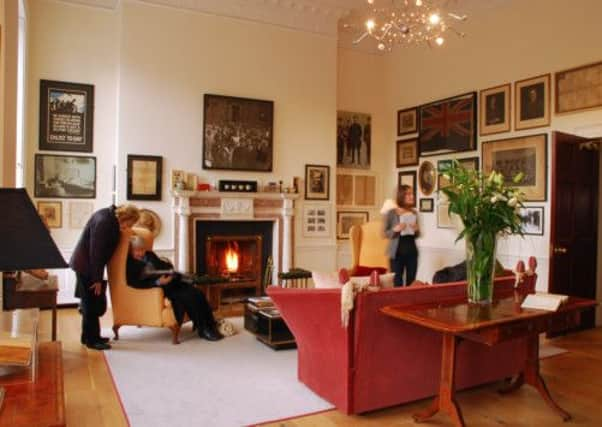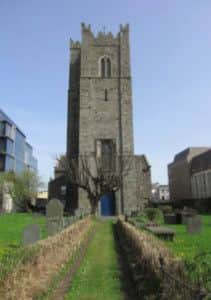Return of the natives


There is perhaps no other nationality that inspires so many to lay claim to a little piece of it in their heritage.
Figures vary, but there could as many as 70 million people in the world claiming to be of Irish descent – a staggering number when you consider the country’s overall population is just 4.6 million. And with tourism now one of Ireland’s main industries, what better way to help overcome the economic troubles of recent years than to invite anyone with even a hint of Gaelic blood in them to head over to be a part of a year-long party?
Advertisement
Hide AdAdvertisement
Hide AdThe Gathering for many is little more than a clever marketing ploy to bring as many visitors as possible to help supplement the tourism industry, which is already worth more than three billion euros to the national economy each year.


But there does seem to be a genuine belief among at least a sizeable proportion of the Irish population that The Gathering is an opportunity to reacquaint themselves with long-lost relatives, or make new-found friends. And one of the main focal points is, understandably, Ireland’s capital city of Dublin.
This autumn sees a host of festivals falling under the banner of The Gathering, including the 18-day Dublin Theatre Festival, the city’s Fringe Festival and a three-day celebration of one of the city’s most famous authors, Bram Stoker.
But Dublin is far more than just a city of events, it is a destination that is renowned for its culture, history and industry – and of course the fabled pint of Guinness. There are the well-trodden tourist haunts including the Guinness Storehouse and the Old Jameson Distillery, dedicated to another of the city’s famous tipples.
Advertisement
Hide AdAdvertisement
Hide AdBoth are worth a visit, although there is an over-riding feeling that you are being subjected to little more than an hour or so of a carefully manufactured advertising campaign.
Perhaps the most fascinating of all the big tourist attractions is Kilmainham Gaol, an atmospheric glimpse into Ireland’s troubled past. From witnessing the spot where some of the main protagonists behind the 1916 Easter Uprising were executed to walking through the East Wing, it is somewhere that conjures up the past while explaining how Ireland has been shaped into the country it is today.
Trinity College is another must-see with its famous Long Room that is lined with 200,000 of the library’s oldest publications, including one of the few remaining copies of the 1916 Proclamation of the Irish Republic.
The college is also the venue for the intricately written Book of Kells, a ninth century manuscript painstakingly created by monks and widely regarded as Ireland’s most prized national treasure.
Advertisement
Hide AdAdvertisement
Hide AdA relatively new addition to the tourist trail is The Little Museum of Dublin, which lives up to its name. The tour of the museum takes in just two rooms, each packed full of artefacts donated by the city’s residents including U2’s singer Bono and actress Maureen O’Hara, a long-time friend of John Wayne.
The collection now includes 5,000 items, but it is the tour guide who really sets the museum apart. Our guide, Ciaran McMahon, provided a hugely entertaining race through the last 100 years of Dublin’s history in the space of just over 30 minutes. As he admitted himself, it was like a historical version of tapas – choosing the most interesting elements and enjoying them to give you a taste for more.
And if ever there is a desire to get off the more well-trodden path of the tourist, then it is to sample Dublin’s famous pubs. Temple Bar may attract the vast majority of visitors, but every pub is almost exactly the same – a band playing traditional Irish music and rammed to the rafters.
Far more appealing are bars such as Doheny & Nesbitt on Lower Baggot Street, which is a favourite of “journalists, civil servants and those with key influence in Irish life”. If it was good enough for Yeats, Behan and Shaw, then it is certainly worth a visit.
Advertisement
Hide AdAdvertisement
Hide AdDublin may not be the prettiest city in the world and its climate is famously unpredictable, but it is somewhere that has a heart and soul which is hard to rival.
The luck of the Irish is certainly true – to have a capital city as charismatic as Dublin is a huge plus when considering that trip as part of The Gathering. No matter how tenuous your Irish roots really are.
Getting There
Details about the forthcoming events and festivals as part of The Gathering are available at www.ireland.com.
Paul Jeeves stayed at The Clarion Hotel in Dublin. More details are available at www.clarionhotelifsc.com. Flights were with Aer Lingus from Manchester International Airport, and more information can be found at www.aerlingus.com.